|
OLD POLAND • MIDDLE
AGES-EIGHTEENTH CENTURY |
|
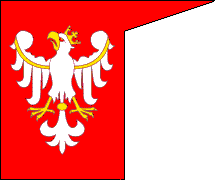
Royal Banner •
Piast Dynasty • Circa 1295 |
|
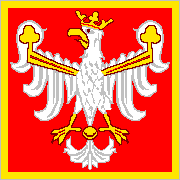
Royal Banner • Wladyslaw I
Lokietek • Circa 1320 |
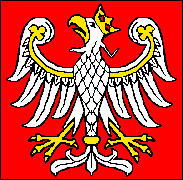
Royal Banner •
Casimar III • Circa 1350
|
|
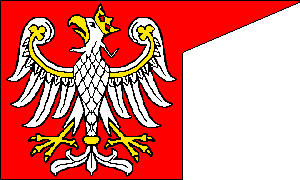
Royal Banner •
Wladyslaw II Jagiello • Circa 1420 |
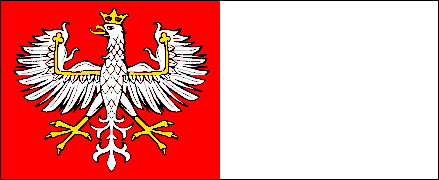
Ensign of the Kingdom of Poland
• Sixteenth Century |
|
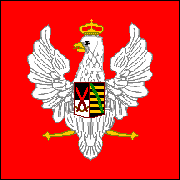
Royal Banner
• Saxon Dynasty • Circa 1750 |

Royal Banner
• Stanislav II • Circa 1780 |
|
The origin of Poland's
coat of arms is obscure but its first appearance in flag form dates
from the thirteenth century. Such flags served as the royal banners
of the Polish kings and were not national flags as the term is
understood today. In the sixteenth century, however, an ensign with
vertical stripes of red and white with the eagle on the red stripe
is known to have been used at sea. The Saxon kings used a royal
banner with the shield of the arms of Saxony on the breast of the
eagle and the last king of Poland, Stanislav II, had a similar
banner with his personal arms on the eagle's breast.
|
|
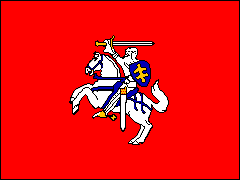
Grand Duchy of Lithuania |
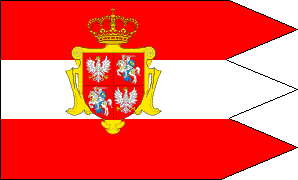
Polish-Lithuanian Commonwealth |
|
In the first half of the
seventeenth century, the Polish-Lithuanian Commonwealth was Eastern
Europe's most wealthy and powerful state. A confederated elective
monarchy, it comprised most of present-day Poland, the Baltic
states, East Prussia, and much of Ukraine and Belorussia. It evolved
from the de facto personal union between the Kingdom of Poland and
the Grand Duchy of Lithuania that had existed since the fourteenth
century and was formalized in the sixteenth century. But the
commonwealth's complex constitution was fatally defective. Political
instability gradually undermined the state and by the middle of the
eighteenth century the Commonwealth was a prey to its increasingly
powerful neighbors. The independence of Poland was extinguished in
the second half of the eighteenth century by Prussia, Austria and
Russia in a series of three territorial partitions. The last of
these, in 1795, wiped Poland from the map. The various flags of the
Commonwealth were striped red-white red, charged with a quartering
of the arms of Poland and Lithuania. |
THE DUCHY OF WARSAW |
|
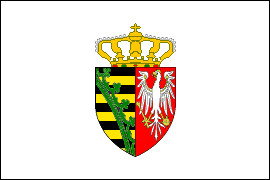
Ducal Standard |
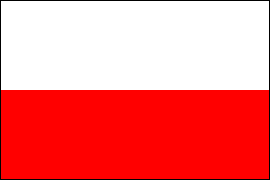
State Flag |
|
Though the once-powerful Polish kingdom was swallowed up by Russia,
Prussia and Austria in the three partitions of the late eighteenth
century, Polish nationalism remained strong. Napoleon Bonaparte gave
it expression when in 1807 he stripped Prussia and Austria of lands
gained in the partitions of Poland, using them to create the Duchy
of Warsaw. The Emperor revived an old connection by appointing his
German ally, King Frederick Augustus I of Saxony, as Duke of Warsaw.
Though the Duchy was little more than a vassal state of France,
Poles hoped that it would make possible a revival of the Kingdom of
Poland. These hopes were dashed, however, by the defeat of Napoleon.
As Duke of
Warsaw, Frederick Augustus I had a white standard displaying the
ducal arms: Saxony and Poland impaled and crowned. A horizontal
white-red bicolor—identical to the current Polish flag—is known to
have been used and though its status is uncertain it may have served
as the state flag. |
CONGRESS POLAND •
1815-32 |
|
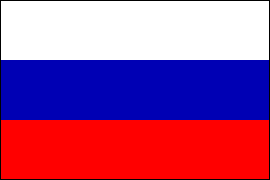
Russian Empire • National Flag |
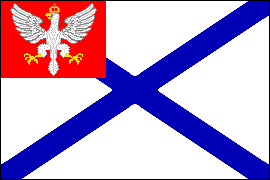
Kingdom of Poland • Civil Ensign |
|
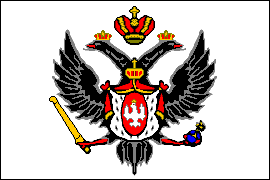
Tsar's Standard as King of
Poland |
|

Flag of the November Uprising
• 1830-31 |
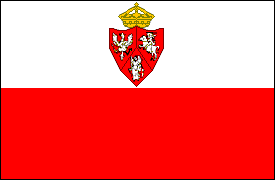
Flag of the January Uprising
• 1863-64
|
|
The
Congress of Vienna
sought as far as possible to restore "legitimacy" to the European
order but recognized that many of the changes wrought by the French
Revolution and the Napoleonic wars could not be undone. Thus,
though the Duchy of Warsaw was abolished and some of its territory
was given to Prussia and Russia, the remainder was fashioned into a
Kingdom of Poland in personal union with the Russian Empire. The
Russian Tsar was crowned King of Poland and the country, informally
known as Congress Poland, was endowed with a distinctly liberal
constitution. This Kingdom of Poland possessed its own
army and
governing institutions, the Tsar being represented in Warsaw by a
Viceroy. But neither Alexander I nor his successor Nicholas I (who
ascended the Russian and Polish thrones in 1829) honored this
arrangement. Russia's determination to eradicate Polish autonomy met
with increasing resistance, culminating in the 1830-31 uprising.
After eleven months of fierce combat in which the Polish Army sided
with the rebels, the revolt was put down. The subsequent Organic
Statute for the Kingdom
of Poland (1832) abolished the Polish constitution, legislative
assembly and army. After another uprising in 1863-64 the kingdom
itself was abolished and Congress Poland was made a province of the
Russian Empire.
Congress
Poland had no national flag, the Russian tricolor serving that
purpose, but there was a Polish merchant ensign, used by vessels on
the Vistula River: the Russian
Andrew flag
with a canton of the Polish arms. The Tsar's standard as King of
Poland displayed the Polish coat of arms on the breast of the
double-headed Russian black eagle. During the 1830-31 and 1863-64
uprisings, several variants of the white-red bicolor were used by
the rebels. |
|
TOWARD INDEPENDENCE • 1916-19
|
|
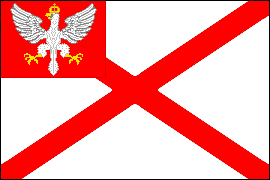
Provisional State
Flag & Ensign • 1918-20 |
|
I
n 1916 the Central Powers, which
by then occupied Russian Poland, proclaimed the territory's
independence from Russia and in 1917 set up a Kingdom of Poland
under a regency. It was intended to place a Habsburg archduke on the
Polish throne but with the defeat of Germany and Austria-Hungary in
late 1918 this plan fell through. Instead a Polish Republic was
proclaimed. The flag of the provisional Republic was the white-red
bicolor. Also in use between 1917 and 1920 was a state flag and
ensign based on that
of the 1915-30 Kingdom of Poland, but with a red saltire cross
instead of a blue one. This flag was abandoned by 1920. |
|
POLAND REBORN • 1919-39 |
|
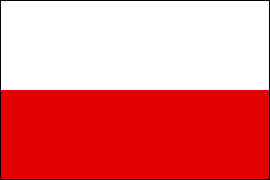
National Flag
• 1919-27 |
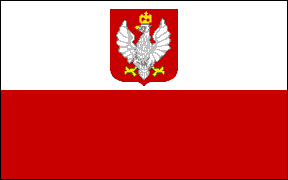
State Flag • 1919-27 |
|
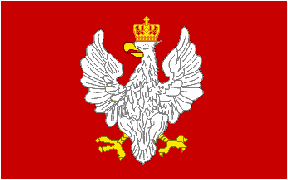
Presidential
Flag • 1919-27 |
|

National Flag
Since 1927 |
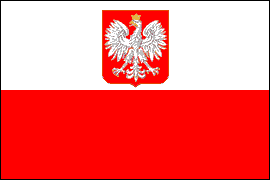
State Flag •
1927-45 & Since 1989 |
|
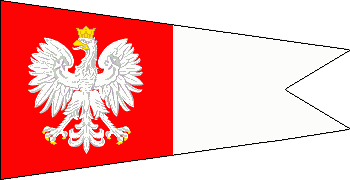
Presidential
Flag • 1927-45 |
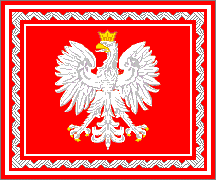
Presidential
Standard Since 1989 |
|
With the establishment of the Republic of
Poland in 1919, Polish flags began to assume their modern form.
The initial flags, in use from 1919 to 1927, were white and
crimson rather than red. The
presidential flag was a banner of the state arms. In 1927 the
eagle was modified to its present style and crimson gave way to
red. A new presidential flag, a swallowtailed pennant
vertically striped in the national colors with the eagle on the
red stripe, replaced the banner of arms. During and after World War II
these flags were used by the London-based Polish government in
exile. That government adopted a presidential flag in 1956. With
the demise of the Polish Peoples Republic in 1989 (see below)
this flag, slightly modified became the Standard of the
President of the Republic of Poland.
|
|
THE
PEOPLES REPUBLIC • 1952-89
|
|

National Flag |
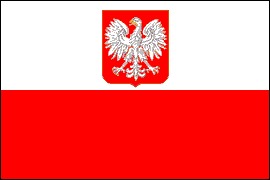
State Flag • 1955-89 |
|

Polish United Worker's Party |
|
Though Poland
fell under Soviet domination in 1945 it was not until 1952 that the
Polish Peoples Republic was formally established. Unlike most other
Eastern European nations in the Soviet sphere, the PPR did not adopt
a communist-style coat of arms. Except for the removal of the crown
from the head of the eagle the Polish coat of arms and Polish flags
were unchanged. The national flag was the plain white-red bicolor,
while the state flag, adopted in 1955, displayed the arms on the
white stripe. The flag of the ruling party—supposedly a coalition of
parties but actually communist dominated—was plain red.
|
|
POLAND HAS NOT YET PERISHED |
|
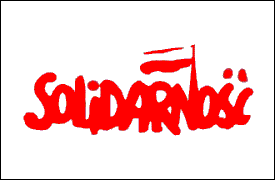
Independent
Self-Governing Trade Union "Solidarity" |
|
Founded
on September 17, 1980
at the Gdańsk Shipyard, the Solidarity trade union heralded the end
of communist rule in Poland. Under the leadership of Lech Wałęsa Solidarity became a major component of the
anticommunist, anti-Soviet movement. In alliance with liberal
intellectuals and the Catholic Church, Solidarity soon brought the
communist regime to the point of collapse. The regime struck back
with a declaration of martial law, which lasted until 1983. But
Poland's economic and social crisis proved insolvable and this
together with the progressive loosening of Soviet control over its
East European satellites, forced the government to negotiate with
Solidarity. The result was fatal to the party-state. Free elections
were held, leading to the formation of a non-communist government.
The hated title of Peoples Republic was scrapped and the country
became the Republic of Poland once more. This was symbolized by
replacing the crown on the head of the Polish eagle.
The Solidarity logo, applied to a white flag, became the symbol or
resistance to the communist regime in the 1980s. Many variants
existed, some with additional inscriptions, some in the form of the
Polish bicolor with the logo on the white stripe. |
























